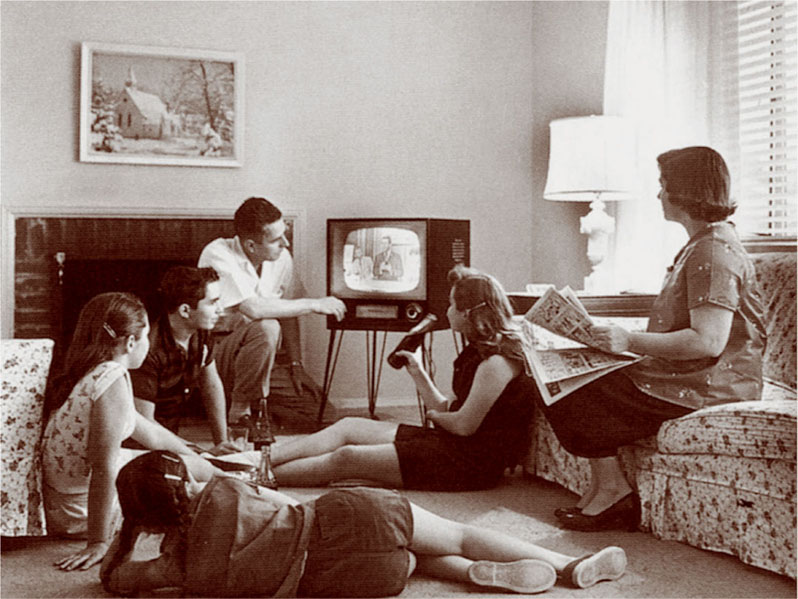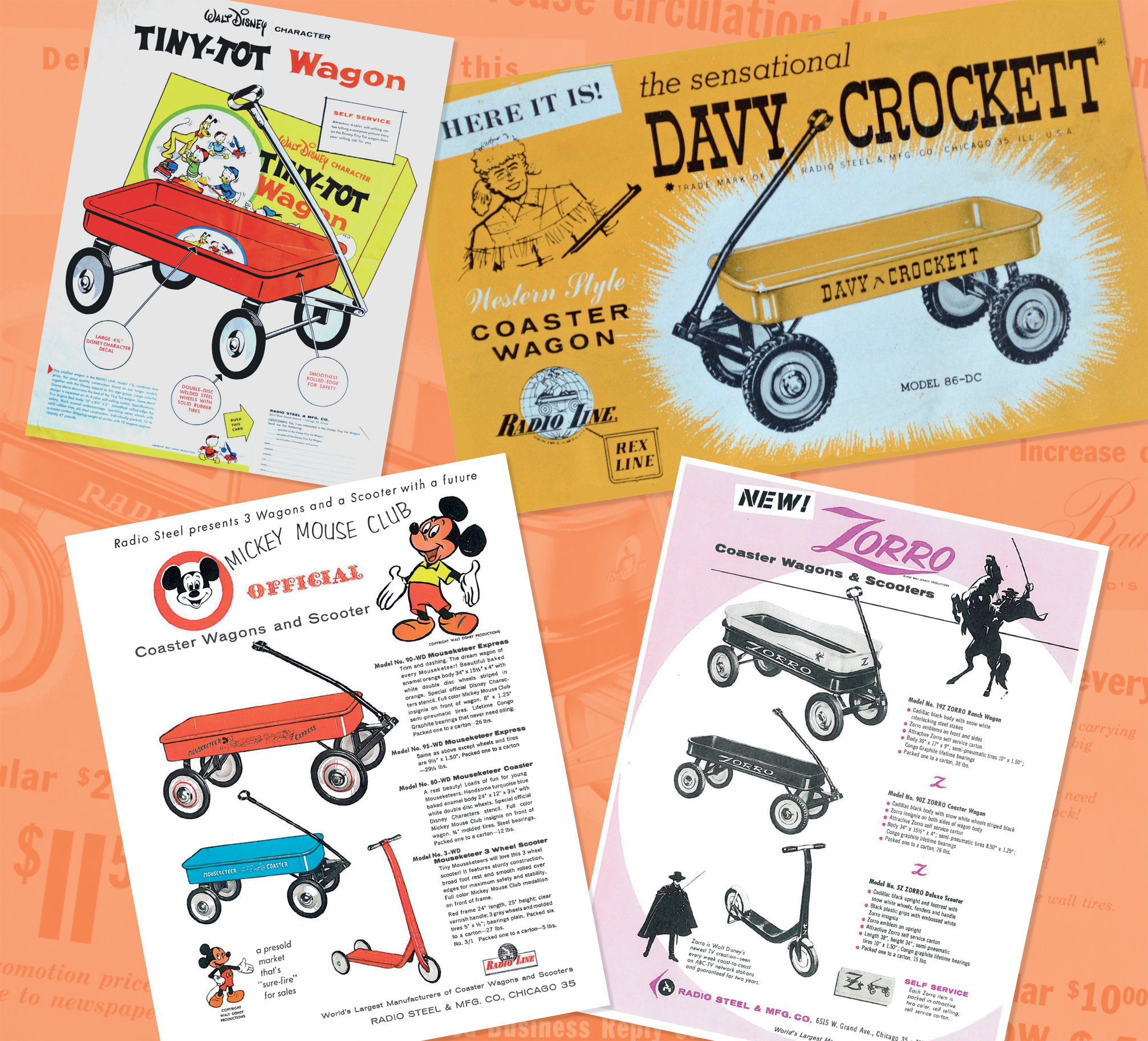ADVENTURES IN TELEVISION
Dubbed by many historians as the “Golden Age of Television,” the 1950s and ’60s saw the number of television sets in the country rise from fewer than ten thousand in 1945 to sixty million in 1969. Just ten years later, 96 percent of all American households owned at least one television, and they could watch shows on more than seven hundred commercial TV stations. Television swiftly became the leading national ad medium in the United States, surpassing radio and magazines as a way to stream ads directly into families’ homes at every hour.
In response to television’s explosive popularity, some of the largest toy companies also took to the small screen. Television became the place where the new, trendy toys were advertised: Hasbro ran local TV advertisements for Mr. Potato Head in 1951. Mattel, which launched the iconic Barbie doll in 1945, became a major advertiser on The Mickey Mouse Club in 1955.

Television watching became a popular pastime for friends and family after work or over the weekends.
Family watching television, c. 1958/Evert F. Baumgardner/via Wikipedia Commons
Amid the frenzy to advertise on TV, Radio Steel & Manufacturing held steadfast to the belief that the best marketing was the product itself and word-of-mouth promotion by consumers who loved it. Antonio had always believed it was most important to keep the price of the product low, which precluded purchasing any major advertising spots—there simply was no margin to do it, since all the money went into building a quality product. Instead, Radio Steel took to the times in its own way. Radio Steel maintained an unwavering focus on the product, and incorporated the trends by designing specialty wagons inspired by some of the most popular movies and TV shows of the time, such as The Mickey Mouse Club, Davy Crockett, and Zorro. With these new wagon designs came new catalogs, brochures, and packaging. Business boomed.

Product ads for Radio Steel’s Davy Crockett, Mouseketeer, Disney character Tiny-Tot, and Zorro coaster wagons—all inspired by some of the most popular TV shows and characters of the 1950s and ’60s.